Does the Vollyball Serve Have to Be in the Left Back Corner
The Spike – Volleyball Story is a new game from DAERISOFT, that's currently available on iOS and Android platforms. It certainly isn't the only volleyball game on mobile nor the only one presented in a 2D perspective. The Spike – Volleyball Story, however, is at the very least as engaging and challenging as the rest of the loosely similar games are and comes with customizable players and a short story as a bonus. Surprisingly enough, you can easily find yourself hooked into it regardless of whether or not you are an avid fan of the sport.
While the simple enough controls and mechanics of The Spike – Volleyball Story makes it a game suitable for players of all ages, the challenge level in general can be surprising especially for beginners. Despite an easier auto mode can be selected before hitting the tutorials, the precision and focus required especially in tournaments can take a while for anyone to accomplish.

Having a 2-dimensional perspective and just a couple of buttons for you to take control of your team, The Spike – Volleyball Story makes the tutorial session at the start of your dive easy enough to master. What comes next stretches across managing each team member's growth as well as continuous improvement of your precision and strategic skills.
If you have just started playing The Spike – Volleyball Story and want to stay ahead of the competition, then read our beginner's guide below, as it comes with a bunch of tips, tricks and strategies!
1. Play With Auto And Beginner Mode On First
One of the key elements to take point of even before you proceed to The Spike – Volleyball Story's tutorial session is choosing between 2 distinct game modes. Regardless of whether or not you are new to mobile gaming, especially volleyball games, it is safe to assume that the reason for presenting you with a choice is because the supposed normal mode may be a little too tricky for most people to fully grasp at the start of the adventure. In any case, you can freely toggle with the settings at any time.
Beginner Mode automatically adjusts your position when you jump while Auto Mode will automatically move your player to where he or she needs to be and also jump if needed. There are separate switches for these modes in the "Play" settings that you can access through the gear icon at the upper right corner of the screen. An additional "Jump" option can also be enabled. This will have your player do a run up action before a spike, which can be triggered by pressing either spike button twice.
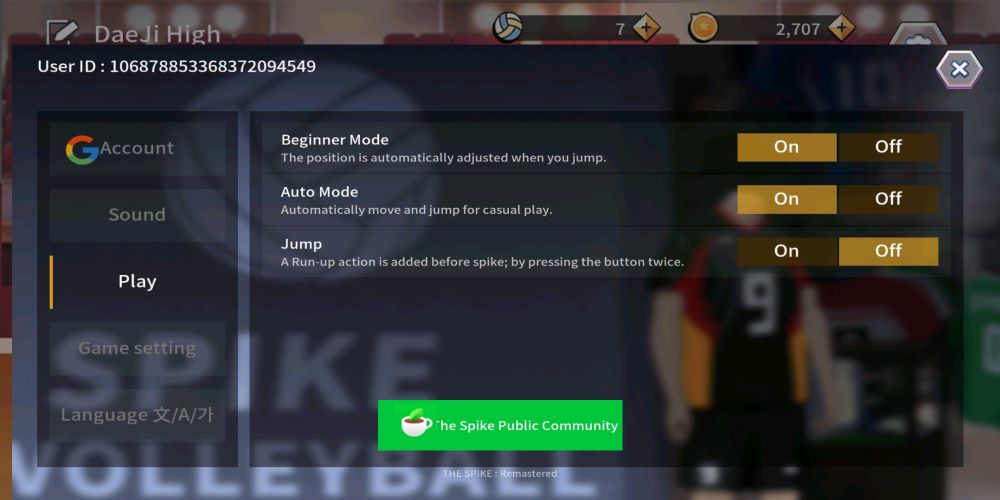
Leaving Auto Mode on will disable the left joystick as your players will move on their own. You will be left with 5 buttons on the match screen to perform different actions. These are the slide button, the short spike button, the receiver button, the long spike button, and the serve button. While the omission of the left joystick is the only visual difference, the controls will be very different when you utilize both assistive modes of gameplay.
Although both the Beginner Mode and the Auto Mode makes gameplay easier and a lot more convenient, it leaves you a lot less freedom as far as strategic plays and more advanced tactics are concerned. Auto Mode also prevents you from engaging in training sessions and bars you from accomplishing some achievement objectives.
Beyond all that, growing overly accustomed to both the Beginner Mode and Auto Mode may later on hamper the growth and development of your skills. At some point, you will have to switch off both options and learn to play manually. It is okay to test the easy mode out with a couple of games but on the latter part of the story adventure and the tournaments, manual play is the best way to go.
2. Engage In Training Sessions
The Spike – Volleyball Story is most certainly a game that is easy to learn yet very challenging to master. Despite shrinking a normal team size down to 3 instead of the conventional 6, and having only a 2-dimensional perspective, plenty of things can still happen at every turn. The usual cycle starts by either performing a serve or receiving the ball, followed by a toss from the setter and finally a spike back to the opposing field.
During the tutorial session or the first level of the story mode, you can almost earn a score with every successful spike. However, as you face stronger teams and compete in the tournament, you will discover just how challenging it becomes to prevent opponents from scoring and earning points for your team as well. Although you can learn as you go through the story mode, the training sessions provided can help you focus specifically on the aspects of the game that you need to work more on. Again, you cannot engage in training mode until you visit the settings and turn off auto mode.
Training mode does not just give you time to raise your proficiencies across the different skills you need to hone in the volleyball court. Accomplishments of tasks within each training session can also earn you some coins. Once you click on the training icon at the lower left side of the screen, you will be able to readily choose from among 5 different training sessions: spike training, receiving training, blocking training, serve training, and a training against an actual opponent.
Spike training is a basic necessity and going through it again and again should considerably improve succeeding spikes you throw down at your opponents. With auto mode and beginner mode turned off, it can be surprisingly challenging to even consistently execute a spike. With some training, your goal should evolve to go beyond consistently spiking the ball but also timing it better for a score.
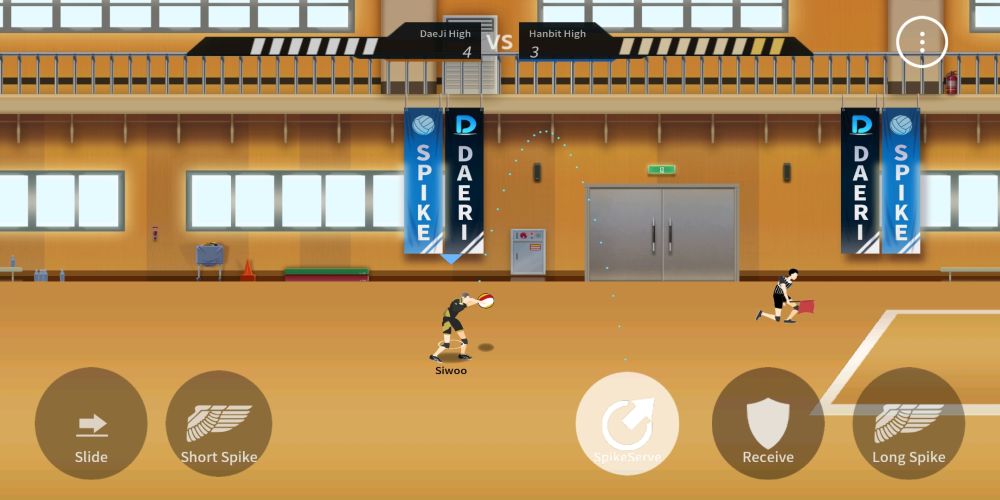
Receiving may actually seem easy following an opponent's serve or a normal toss. However, as you make further progress in your volleyball career, play the higher levels of the story mode, or compete in the tournament, the different levels of spikes you will encounter evokes a necessity to practice receiving. Of course, it isn't enough for you to actually catch the spike successfully but rather, ensure that it will not bounce behind afterwards to give a point to your opponent or make it impossible to set later for your own spike.
If you peeked into the tournament early on, chances are that the way how some opponents block your spikes will leave you discombobulated. Some tall and powerful opponents will never allow any spike to go through regardless of what you do and the way they block almost always results in a point for them. In these cases, you will have to learn how to perform a diving receive. For this, you will have to use a run in before actually clicking on the receive button. It is tricky to master, but well worth the practice time and effort.
Serve training is yet another aspect of The Spike – Volleyball Story that you probably underestimate initially. It may come as a surprise to you, but there are 3 different ways to initiate a serve in the game. The first one, which is the most basic and cannot be performed in training mode, can be done by simply tapping the serve button. The next one is called a jump floater. This can be performed by holding on the jump button or pressing it multiple times for a different timing.
The last one, and the most challenging to do, is the jump serve and for this one, you may have to adjust the player's position using the left joystick. You can hold the serve button to adjust the angle of the toss and once you release it the toss is executed. Depending on your settings, you may have to reposition your player to adjust the outcome of the serve itself.
Once you are confident enough on the results of your training sessions across the first 4 options, you should put all those practice to test through the fifth and final training option, which is with an opponent. The setup is very much similar to the usual matches you engage in, although the difficulty is still below tournament level. If you manage to beat the opposing team in training, you should be confident enough to take on the story levels.
3. Progress Through The Story Mode
The initial tutorial session actually ends with you completing the first level of the story mode. There are a total of 18 stages and the weird part is that you do not necessarily have to play through each one in a progressive sequence. You can go and challenge stage 18 before you even take on stage 2. The stages, however, have increasing difficulty levels so chances are that you will not win on stage 18 at your current level and experience.
Depending on how much time and effort you invested in training, you can win through the early stages with ease, especially with both beginner mode and auto mode on. If you are ready to take on story mode without assistive controls, then you may want to reassess your skill level by challenging the first stage again.
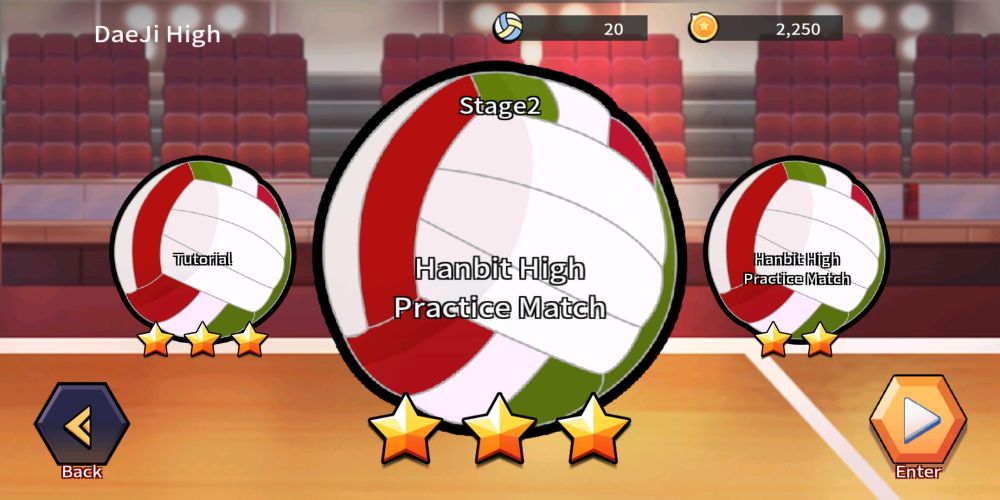
Every win you manage to pull will earn you coins and as the quality of your play is rated between 1 to 3 stars, you can expect that a 3-star win will earn you the most coins. As an added bonus, you can earn volleyballs for beating each stage with a 3-star rating for the first time. You can also replay any level for practice but 3-star ratings beyond the first will only earn you coins.
The story mode in The Spike – Volleyball Story actually serves as the next layer of training to prepare you for the tournament. As each stage increases its difficulty over the previous one, you may need to grind in-between stages to power up your players. Beyond player stats, your skills will be honed as well with each story mode battle you play through.
4. Properly Upgrade Each Player
The Spike – Volleyball Story starts you off with 3 players for your team. Each one expectedly has a designated position or specialization and stats that mostly go in line with their positions. You only need coins to upgrade each player's stats and while earning coins is comparatively easier than earning volleyballs, the increase in costs based on the player's stat boost grows as well.
Although you can freely make adjustments to each player's stats, it is important to know and understand what each attribute is about and how it can make your team stronger and efficient. There are limits as well to the maximum points a player can have as well as caps on each stat. There are 4 different stats you can adjust for each player and these are the attack power, defense power, jump power, and speed.
For the wing striker, the priority stat should always be power. Wing Strikers are naturally who you rely on for scores and higher power equates to stronger spikes. If you feel the need for more speed, investing in it helps as well. You may occasionally need it to position yourself better for sets. A bit of increase in jump power can help as well.
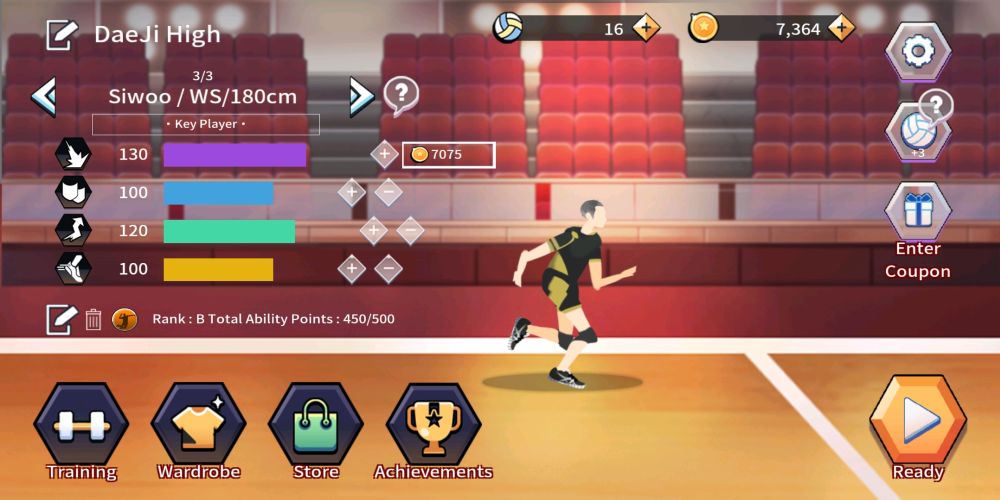
The Middle Blocker' main objective is to defend and makes it his or her primary objective to prevent the other team from earning a point. Receiving serves and spikes as well as blocking them can be a real challenge as you progress through the stages or enter in the tournament and beyond investing in more defense power as a priority, allocating some points on jump power and speed can help your Middle Blocker as well.
A Setter may appear to have the most self-explanatory role in the team, which is to set the ball up for his teammates to follow through with a spike. Setters are the only position with styles and the starting one has an aggressive style. Setters need to be able to prep a toss just about anywhere and speed is his or her most essential stat to build on. A bit of power and jump can help your Setter to some extent as well but maxing out speed should be a priority.
The 3 starting players you will have on your team are all grades C, B-, and B characters, respectively. You can click on the store button on the screen and recruit additional ones at random. It may take a while for you to have the means to recruit your first new player as it costs volleyballs to do so. You can recruit a random player for 50 volleyballs or recruit a random one for a specific position for 80 volleyballs. Higher grade characters will have higher ability point caps and can be expected to perform better than lower grade ones.
5. Do Not Let Tournament Losses Discourage You
Even if you have spent some time across all training modules and beat all 18 stages of the story mode, the challenge level of the tournament can still be overwhelming. Not all the teams you go against have equal potential but each one can leave your ego bruised and battered if you are not prepared. The tournament is the ultimate test of everything you have learned and experienced so far and yet it is still the place where you can further hone your skills and strategies.
The way how you built each players stats and how you manage to work the player you control can make a lot of difference in how the entire team synergizes. On one hand, you should be more focused on your position and on the other, trust and observe how you're each of your A.I. teammates performs. Feel free to tinker with stat distributions if you feel the need to.
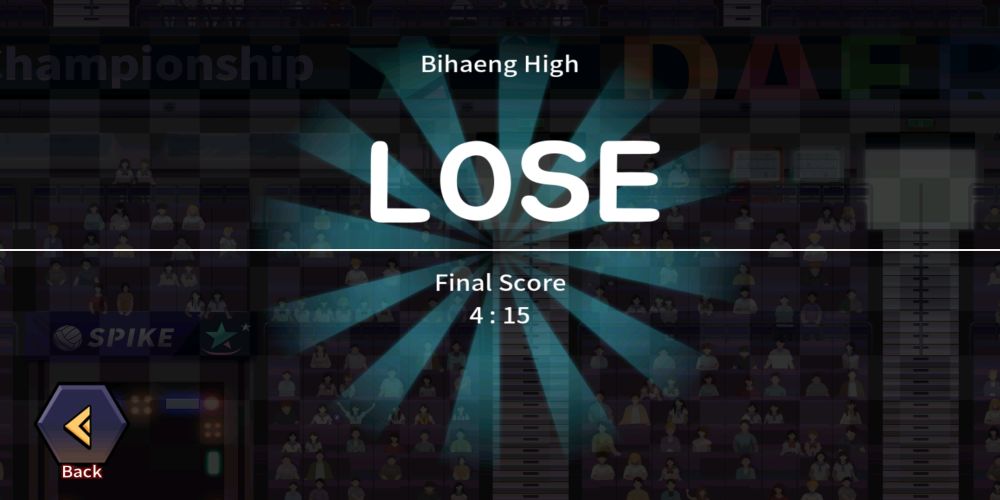
It can be expected that a lot of effort alone may not suffice for you to finally lay claim to victory in the tournament. Keep in mind that beating one team alone can be very challenging and you will need to beat 3 to finally be able to take the trophy home. The ranks of the starting players certainly ads to the challenge and the recruitment of higher grade ones will definitely be something to look forward to.
The most important part of The Spike – Volleyball Story is to continue pouring in patience at the face of defeat. As we mentioned earlier, it is easy to play but difficult to master, and every much all the way up to the tournament is in itself contributory to a long line of continuous training.
6. Pursue Achievements And Ad Rewards
With volleyballs being a premium currency that are very challenging to earn, and being the exclusive means to obtain new players as well as new costumes, you would naturally want to get your hands on more of it as much as you can. Completing each story mode stage with a 3-star rating for the first time and winning a round in a tournament earns you volleyballs but those will certainly not be enough for all the items you would want to spend it on.
Fortunately enough, The Spike – Volleyball Story provides additional opportunities for you to speed up the grind for more volleyballs. For starters, You can check on the list of achievement objectives via its icon on the main screen. The objectives very much relate to what you would actually be doing across different types of matches and beyond the volleyball rewards for each task's completion, these milestones are proof of your progression as far as your skills and strategies in the game goes. Completing each stage of the achievements grants you extra volleyballs as well so be sure to peek into the list and strive to accomplish each listed objective.
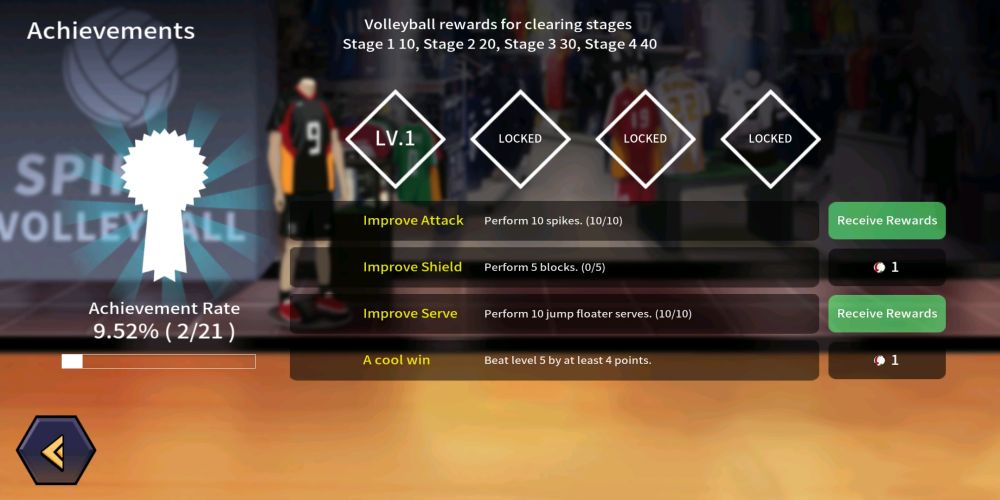
At the right side of the main screen, there are ad rewards you can earn by playing 15 to 30-second video ads. Although video ads already play in-between matches and training sessions, most can be instantly skipped any way. Like what we always say on our other guides about the existence of video ads, it is highly likely that a lot of players will still be annoyed by their existence.
It is important to understand, however, that these ads exist to ensure that the game will stay available for everyone to play for free. The more ads you play via the ad rewards, the higher amount of volleyballs you can earn so if you feel like taking a quick break in-between practice or matches, feel free to play as many of them as you can while resting.
7. You Can Play The Game Offline
It may not be obvious at first, but The Spike – Volleyball Story is actually a game you can play offline. Despite the existence of ad rewards you can earn more volleyballs from, there is actually no other reason for you to play the game online. In this sense, playing it can be split between doing so online just to take all the free volleyballs from the ad rewards and then shifting to offline play for uninterrupted gameplay.
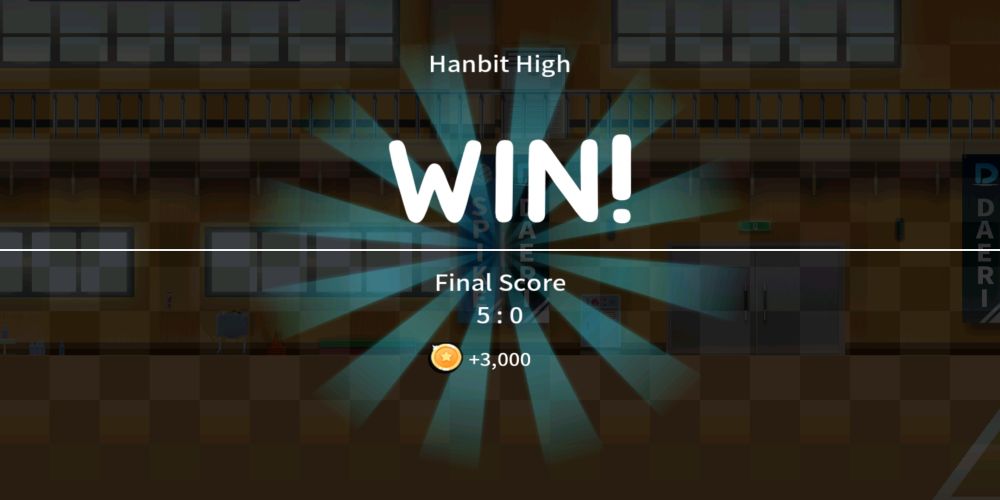
You simply need to exit out of the app and switch of your Wi-Fi or mobile data to play offline. You may need to close the app again before you can play online after launching it in offline mode, in case you played offline first and then decided to take advantage of the ad rewards at a later time.
And that's all the tips we have for The Spike – Volleyball Story. We are certainly looking forward for more things to be added to the game in future updates. We hope that the tips and tricks we shared in this article will help you towards finally nabbing a tournament victory. If there are some tips, tricks, or strategies we missed that you know about, feel free to tell us about them in the comment area!
Does the Vollyball Serve Have to Be in the Left Back Corner
Source: https://www.levelwinner.com/the-spike-volleyball-story-beginners-guide-tips-tricks-strategies/
Belum ada Komentar untuk "Does the Vollyball Serve Have to Be in the Left Back Corner"
Posting Komentar